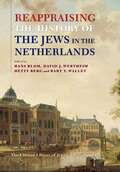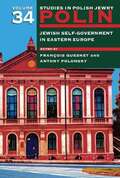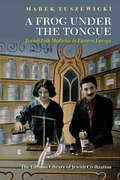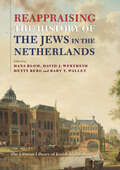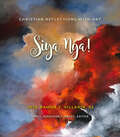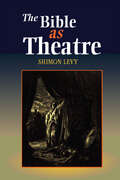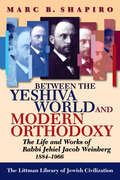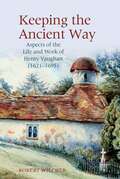- Table View
- List View
Karaism: An Introduction to the Oldest Surviving Alternative Judaism (The Littman Library of Jewish Civilization)
by Daniel J. LaskerFinalist for National Jewish Book Award for Scholarship 2022. Karaite Judaism emerged in the ninth century in the Islamic Middle East as an alternative to the rabbinic Judaism of the Jewish majority. Karaites reject the underlying assumption of rabbinic Judaism, namely, that Jewish practice is to be based on two divinely revealed Torahs, a written one, embodied in the Five Books of Moses, and an oral one, eventually written down in rabbinic literature. Karaites accept as authoritative only the Written Torah, as they understand it, and their form of Judaism therefore differs greatly from that of most Jews. Despite its permanent minority status, Karaism has been an integral part of the Jewish people continuously for twelve centuries. It has contributed greatly to Jewish cultural achievements, while providing a powerful intellectual challenge to the majority form of Judaism. This book is the first to present a comprehensive overview of the entire story of Karaite Judaism: its unclear origins; a Golden Age of Karaism in the Land of Israel; migrations through the centuries; Karaites in the Holocaust; unique Jewish religious practices, beliefs, and philosophy; biblical exegesis and literary accomplishments; polemics and historiography; and the present-day revival of the Karaite community in the State of Israel.
Eternity in British Romantic Poetry (Liverpool English Texts and Studies #94)
by Madeleine CallaghanEternity in British Romantic Poetry explores the representation of the relationship between eternity and the mortal world in the poetry of the period. It offers an original approach to Romanticism that demonstrates, against the grain, the dominant intellectual preoccupation of the era: the relationship between the mortal and the eternal. The project's scope is two-fold: firstly, it analyses the prevalence and range of images of eternity (from apocalypse and afterlife to transcendence) in Romantic poetry; secondly, it opens up a new and more nuanced focus on how Romantic poets imagined and interacted with the idea of eternity. Every poet featured in the book seeks and finds their uniqueness in their apprehension of eternity. From Blake’s assertion of the Eternal Now to Keats’s defiance of eternity, Wordsworth’s ‘two consciousnesses’ versus Coleridge’s capacious poetry, Byron’s swithering between versions of eternity compared to Shelleyan yearning, and Hemans’s superlative account of everlasting female suffering, each poet finds new versions of eternity to explore or reject. This monograph sets out a paradigm-shifting approach to the aesthetic and philosophical power of eternity in Romantic poetry.
Reappraising the History of the Jews in the Netherlands (The Littman Library of Jewish Civilization)
The two decades since the last authoritative general history of Dutch Jews was published have seen such substantial developments in historical understanding that new assessment has become an imperative. This volume offers an indispensable survey from a contemporary viewpoint that reflects the new preoccupations of European historiography and allows the history of Dutch Jewry to be more integrated with that of other European Jewish histories. Historians from both older and newer generations shed significant light on all eras, providing fresh detail that reflects changed emphases and perspectives. In addition to such traditional subjects as the Jewish community’s relationship with the wider society and its internal structure, its leaders, and its international affiliations, new topics explored include the socio-economic aspects of Dutch Jewish life seen in the context of the integration of minorities more widely; a reassessment of the Holocaust years and consideration of the place of Holocaust memorialization in community life; and the impact of multiculturalist currents on Jews and Jewish politics. Memory studies, diaspora studies, postcolonial studies, and digital humanities all play their part in providing the fullest possible picture. This wide-ranging scholarship is complemented by a generous plate section with eighty fully captioned colour illustrations.
Torah from Heaven: The Reconstruction of Faith (The Littman Library of Jewish Civilization)
by Norman SolomonTraditional Jewish religious belief speaks of a divinely revealed, perfect text, authoritatively expounded. The question this book addresses is one with which the author has struggled all his life: in the light of historical criticism, advances in knowledge, and changing moral attitudes, is the traditional notion of divine revelation and authoritative interpretation still valid? The focus is on Judaism and the examples are mostly drawn from that tradition, but the arguments are easy to transpose to other religions. Norman Solomon's discussion will appeal to those who seek to identify with a religious community but who are troubled by the claim of divine authority made for the scriptures of that community. Ranging across several academic disciplines, it is addressed to people of all religions who find their heads and their hearts are not in accord with each other. It is accessible to a general readership interested in the relationship of scripture, interpretation, and religious authority, though scholars will find original observations and historical interpretations in many areas. It should find a ready place in university and popular programmes in Jewish studies, general theology, and philosophy of religion.
Kabbalah and Jewish Modernity (The Littman Library of Jewish Civilization)
by Roni WeinsteinSomething crucial and quite unprecedented happened to kabbalah in the sixteenth and seventeenth centuries. Though it had previously been considered a highly secretive and esoteric tradition, its practitioners began to spread its doctrines throughout the Jewish world with missionary zeal. Their goal was ambitious: no less than the remodelling of the religious and ethical attitudes of the entire Jewish population, a reformation of Judaism. Few aspects of Jewish life and religious practice were not changed as a result of the spread of kabbalah. These innovations originated mainly in the city of Safed in Galilee. They were introduced by kabbalistic adepts, but would not have gained broad acceptance if they had not made sense to people in terms of their everyday lives. The kabbalistic corpus that emerged should thus be interpreted not just as the elaboration of a secretive literary tradition, but as a response to the needs of Jewish society in its manifest historical context. In addition, Roni Weinstein argues, these kabbalistic innovations were partly a response to changes in the Catholic world-view, revealing an intimate link with Counter-Reformation Catholicism that is explored here for the first time. The religious and political changes taking place in contemporary Ottoman settings also contributed to these changes. The effect of these developments on Jewish culture was nothing short of revolutionary, deeply affecting people’s lives at the time and also laying the foundations for change in future generations. Yet they were not presented as revolutionary: the early modern kabbalists understood that they would only succeed in spreading their message if they presented their doctrines as the natural continuation of what went before. Weinstein’s sociological reading of mystical texts encompasses a number of methodological innovations, including the need to consider the impact of the non-Jewish environment in the fashioning of Jewish texts. He sees the emergence of ‘Jewish modernity’ as the result of developments that were intrinsically Jewish rather than as a response to outside influences during the Enlightenment; controversially, he therefore places its origins in the Mediterranean world of the late sixteenth century rather than in eighteenth-century Berlin. His argument is based on a wide range of Jewish sources—including theological tracts, kabbalistic and ethical literature, hagiographies, mystical diaries, halakhic rulings and responsa, and community and confraternal regulations—as well as the testimonies non-Jewish travellers, and Catholic religious literature. This stimulating new reading of the development of kabbalistic texts and practices opens a new chapter in the understanding of Jewish modernity. The Hebrew edition of this book was awarded the Goren-Gottstein Prize for the Best Book in Jewish Thought 2010–2012.
Polin: Jews in the Kingdom of Poland, 1815-1918 (Polin: Studies in Polish Jewry #27)
The Kingdom of Poland, also known as the Congress Kingdom or Russian Poland, was created by a decision of the Congress of Vienna as part of its attempt to set up a post-Napoleonic European order. It incorporated lands that for many decades had been the most important centres of Polish politics, finance, education, and culture, and which also had the largest concentration of Jews in eastern Europe. Because of these factors, and because its semi-autonomous status allowed for the development of a liberal policy towards Jews quite different from that of Russia proper, the Kingdom of Poland became a fertile ground for the growth of Jewish cultural and political movements of all sorts, many of which continue to be influential to this day. This volume brings together a wide range of scholars to present a broad view of the Jewish life of this important area at a critical moment in its history. In the nineteenth century, tradition vied with modernization for Jews’ hearts and minds. In the Kingdom of Poland, traditional hasidic leaders defied the logic of modernization by creating courts near major urban centres such as Warsaw and Łódź and shtiblekh within them, producing innovative and influential homiletic literature and attracting new followers. Modernizing maskilim, for their part, found employment as government officials and took advantage of the liberal climate to establish educational institutions and periodicals that similarly attracted followers to their own cause and influenced the development of the Jewish community in the Kingdom in a completely different direction. Their immediate successors, the Jewish integrationists, managed to gain considerable power within the Jewish community and to create a vibrant and more secular Polish Jewish culture. Subsequently Zionism, Jewish socialism, and cultural autonomy also became significant forces. The relative strength of each movement on the eve of the rebirth of Poland is extremely difficult to measure, but unquestionably the ferment of so many potent, competing movements was a critical factor in shaping the modern Jewish experience.
Revisioning Ritual: Jewish Traditions in Transition (Jewish Cultural Studies #v. 3)
Often overlooked as routine or even dismissed as odd customs, ritual in its many guises demands attention as a central strategy for embodying experience. Like other groups, Jews rely on ritual to provide an inventory of social meanings and a context for negotiating the challenges of everyday life. Ritual for Jews has historically carried special meanings for conveying what is Jewish about Jewishness. It is not enough, however, simply to document customs: for a full understanding of ritual and its meaning for participants we need to analyse how ritual expressions such as liturgies, holidays, life-cycle events - even political rallies - change in response to developments in the wider society, or are adapted to meet new needs. The innovative studies of adapted, invented, and evolving rituals presented in this volume, that include the Tunisian Jewish celebration of Se'udat Yitro, liturgical prayers for Israel Independence Day, shiva observance in an old-age home, transplanted Ethiopian Jewish wedding events, and same-sex marriage rituals. thus interpret the Jewish enactment of ritual and uses of tradition in everyday life against the background of modernity and community. It is the complexities of ritual - the dynamics of negotiating the religious and the secular, the traditional and the modern, the social and the political, performance and practice - that form the core of the book. Together, the contributors show ritual action to be key to the maintenance of Jewish identity and to the expression of a distinctive world-view.
Framing Jewish Culture: Boundaries and Representations (Jewish Cultural Studies #4)
by Simon J. BronnerModernity offers people choices about who they want to be and how they want to appear to others. The way in which Jews choose to frame their identity establishes the dynamic of their social relations with other Jews and non-Jews - a dynamic complicated by how non-Jews position the boundaries around what and who they define as Jewish. This book uncovers these processes, historically, as well as in contemporary behavior, and finds explanations for the various manifestations, in feeling and action, of 'being Jewish.' Boundaries and borders raise fundamental questions about the difference between Jews and non-Jews. At root, the question is how 'Jewish' is understood in social situations where people recognize or construct boundaries between their own identity and those of others. The question is important because this is by definition the point at which the lines of demarcation between Jews and non-Jews, and between different groupings of Jews, are negotiated. Collectively, the contributors to the book expand our understanding of the social dynamics of framing Jewish identity. The book opens with an introduction that locates the issues raised by the contributors in terms of the scholarly traditions from which they have evolved. Part I presents four essays dealing with the construction and maintenance of boundaries - two by scholars showing how boundaries come to be etched on an ethnic landscape and two by activists who question and adjust distinctions among neighbors. Part II focuses on expressive means of conveying identity and memory, while, in Part III, the discussion turns to museum exhibitions and festive performances as locations for the negotiation of identity in the public sphere. A lively discussion forum concludes the book with a consideration of the paradoxes of Jewish heritage revival in Poland, and the perception of that revival by Jews and non-Jews. *** ..".these essays help us understand the social dynamics of Jewish identity and how identity is constructed in modern life." -- AJL Reviews, February/March 2015 (Series: Jewish Cultural Studies - Vol. 4) [Subject: Jewish Studies, Cultural Studies]
Rupture and Reconstruction: The Transformation of Modern Orthodoxy (The Littman Library of Jewish Civilization)
by Haym SoloveitchikThe essay that forms the core of this book is an attempt to understand the developments that have occurred in Orthodox Jewry in America in the last seventy years, and to analyse their implications. The prime change is what is often described as ‘the swing to the right’, a marked increase in ritual stringency, a rupture in patterns of behaviour that has had major consequences not only for Jewish society but also for the nature of Jewish spirituality. For Haym Soloveitchik, the key feature at the root of this change is that, as a result of migration to the ‘New Worlds’ of England, the US, and Israel and acculturation to its new surroundings, American Jewry—indeed, much of the Jewish world— had to reconstruct religious practice from normative texts: observance could no longer be transmitted mimetically, on the basis of practices observed in home and street. In consequence, behaviour once governed by habit is now governed by rule. This new edition allows the author to deal with criticisms raised since the essay, long established as a classic in the field, was originally published, and enables readers to gain a fuller perspective on a topic central to today’s Jewish world and its development.
Polin: Promised Lands: Jews, Poland, and the Land of Israel (Polin: Studies in Polish Jewry #35)
An in-depth and multifaceted investigation of how Polish Jews, Polish Zionism, and Polish culture influenced Israel’s cultural and political development, as well as of how the Zionist project influenced Jewish life in Poland. From its inception as a political movement, Zionism had as its main goal the creation of a ‘New Jew’ who could contribute to building a Jewish state, preferably in the historic homeland of the Jewish people, where Jews would free themselves from the negative characteristics which, in the view of the ideologues of Zionism, had developed in the diaspora. Yet, inevitably, those who settled in Palestine brought with them considerable cultural baggage. A substantial proportion of them came from the Polish lands, and their presence significantly affected the political and cultural life of the Yishuv, and later the State of Israel. In this volume, scholars from Israel, Poland and elsewhere in Europe, and North America explore different aspects of this influence, as well as the continuing relationship between Israel and Poland, up to the present day.
Polin: Jewish Self-Government in Eastern Europe (Polin: Studies in Polish Jewry #34)
Few features have shaped east European Jewish history as much as the extent and continuity of Jewish self-rule. Offering a broad perspective, this volume explores the traditions, scope, limitations, and evolution of Jewish self-government in the Polish lands and beyond. Extensive autonomy and complex structures of civil and religious leadership were central features of the Jewish experience in this region, and this volume probes the emergence of such structures from the late medieval period onwards, looking at the legal position of the individual community and its role as a political actor. Chapters discuss the implementation of Jewish law and the role of the regional and national Jewish councils which were a remarkable feature of supra-communal representation in the Polish–Lithuanian Commonwealth.The volume reflects on the interaction between Jewish legal traditions and state policies, and offers an in-depth analysis of the transformation of Jewish self-government under the impact of the partitions of Poland–Lithuania and the administrative principles of the Enlightenment. Co-operation between representatives of the Jewish and non-Jewish communities at the local level is discussed down to the interwar years, when Jewish self-government was considered both a cherished legacy of pre-partition autonomy and a threat to the modern nation state.
Catholic Christianity in Evolution: The Spiritual Prophecy of Teilhard de Chardin
by Alan SageChristianity, and its theological and spiritual underpinnings, does not fulfil the needs of people living in a rapidly changing world. For all its good intention, the Catholic Church has failed to provide the necessary religious tools to its congregants and wider Catholic community to confront the ecological and environmental problems that confront mankind. This book sets out the required parameters of spirituality within an evolutionary world context, linking the theological with the practical, under the aegis of the Jesuit Pierre Teilhard de Chardin. His writings promote a concept of God at the centre of the world we live in - a Christian way of living, fully engaged. At the heart of Teilhard's world view are creation, evolution, and the environment. He provides the spiritual tools to understand a God that is, in real effect, our evolving world and our actions toward it. In looking after God's world through our daily commitment we meet the needs of the whole of creation. And this makes Christian faith truly meaningful and of direct relevance to our living in the world. Indeed, the second encyclical of Pope Francis (Laudato si') with its care for our common home message, is Teilhardian in its outlook. Likewise the Pope's sacrament of the brother teaching. Because of the inextricable link between human activity and the creative work of God, Teilhard saw all human endeavour as holy. Herewith the Ignatian theme of 'finding God in all things', coupled with a cosmic approach to redemption and the notion of ongoing divine creativity. Teilhard's vision is a template for understanding our place in the world, our intimate relationship to the whole of creation and our responsibilities to the environment and to each other. Teilhard asks us to face the challenges of a rapidly changing world as co-creators with God - a tremendous privilege but also an awesome responsibility. An Appendix lists all of Teilhard's writings and their publication sources, divided into five main sections, and further subdivided by topic - an indispensable resource tool for Teilhard scholars, and for readers familiar with The Divine Milieu and The Human Phenomenon.
Buddhism and the Coronavirus: The Buddha's Teaching on Suffering (The Sussex Library of Religious Beliefs & Practice)
by Jeaneane FowlerThis book examines the early teachings of Buddhism associated with the life of the Buddha, Siddhatta Gotama. In these teachings, the Buddha put forward his famous Four Noble Truths concerning the nature of suffering, its causes, the Truth that it can be overcome, and a pathway to end suffering. The suffering experienced in the contemporary coronavirus pandemic may seem to be very distant from the Buddhas message delivered over two thousand years ago, but the teaching of the Four Noble Truths is as relevant today as it was all that time ago. So this book melds the two, occasionally with discrete treatment of past and present but ever cognizant of the ways in which the teachings of the past inform the present crisis. To understand coronaviruses, the book examines the nature of viruses, their origins, causes and the ways in which they are both friends and enemies of humankind. Importantly and crucially, the book investigates how far humanity itself is the cause of its own suffering in the pandemics that arise no less in the coronaviruses that have emerged in the twenty-first century. Chapters include: The Buddha; Viruses: Friends and Enemies; The Noble Truth of Suffering; The Second Noble Truth of the Cause of Suffering; The Third Noble Truth of the Cessation of Suffering; The Fourth Noble Truth: The Noble Eightfold Path; The Noble Eightfold Path: Mindfulness and Concentration; The Brahma-vihara: Love: Compassion: Sympathetic Joy: Equanimity.
A Frog Under the Tongue: Jewish Folk Medicine in Eastern Europe (The Littman Library of Jewish Civilization)
by Marek TuszewickiWinner of the 2021 Gierowski-Shmeruk PrizeShortlisted for the Folklore Society's Katharine Briggs Award 2021Jews have been active participants in shaping the healing practices of the communities of eastern Europe. Their approach largely combined the ideas of traditional Ashkenazi culture with the heritage of medieval and early modern medicine. Holy rabbis and faith healers, as well as Jewish barbers, innkeepers, and pedlars, all dispensed cures, purveyed folk remedies for different ailments, and gave hope to the sick and their families based on kabbalah, numerology, prayer, and magical Hebrew formulas. Nevertheless, as new sources of knowledge penetrated the traditional world, modern medical ideas gained widespread support. Jews became court physicians to the nobility, and when the universities were opened up to them many also qualified as doctors. At every stage, medicine proved an important field for cross-cultural contacts.Jewish historians and scholars of folk medicine alike will discover here fascinating sources never previously explored—manuscripts, printed publications, and memoirs in Yiddish and Hebrew but also in Polish, English, German, Russian, and Ukrainian. Marek Tuszewicki's careful study of these documents has teased out therapeutic advice, recipes, magical incantations, kabbalistic methods, and practical techniques, together with the ethical considerations that such approaches entailed. His research fills a gap in the study of folk medicine in eastern Europe, shedding light on little-known aspects of Ashkenazi culture, and on how the need to treat sickness brought Jews and their neighbours together.
Challenge and Conformity: The Religious Lives of Orthodox Jewish Women (The Littman Library of Jewish Civilization)
by Lindsey Taylor-GuthartzOrthodox Jewish women are increasingly seeking new ways to express themselves religiously, and important changes have occurred in consequence in their self-definition and the part they play in the religious life of their communities. Drawing on surveys and interviews across different Orthodox groups in London, as well as on the author’s own experience of active participation over many years, this is a thoroughly researched study that analyses its findings in the context of related developments in Israel and the USA. Sympathetic attention is given to women’s creativity and sophistication as they struggle to develop new modes of expression that will let their voices be heard; at the same time, the inevitable points of conflict with the male-dominated religious establishment are examined and explained. There is a focus, too, on the impact of innovations in ritual: these include not only the creation of women-only spaces and women’s participation in public practices traditionally reserved for men, but also new personal practices often acquired on study visits to Israel which are replacing traditions learned from family members. This is a much-needed study of how new norms of lived religion have emerged in London, influenced by both the rise of feminism and the backlash against it, and also by women’s new understanding of their religious roles.
Rupture and Reconstruction: The Transformation of Modern Orthodoxy (The Littman Library of Jewish Civilization)
by Haym SoloveitchikThe essay that forms the core of this book is an attempt to understand the developments that have occurred in Orthodox Jewry in America in the last seventy years, and to analyse their implications. The prime change is what is often described as ‘the swing to the right’, a marked increase in ritual stringency, a rupture in patterns of behaviour that has had major consequences not only for Jewish society but also for the nature of Jewish spirituality. For Haym Soloveitchik, the key feature at the root of this change is that, as a result of migration to the ‘New Worlds’ of England, the US, and Israel and acculturation to its new surroundings, American Jewry—indeed, much of the Jewish world— had to reconstruct religious practice from normative texts: observance could no longer be transmitted mimetically, on the basis of practices observed in home and street. In consequence, behaviour once governed by habit is now governed by rule. This new edition allows the author to deal with criticisms raised since the essay, long established as a classic in the field, was originally published, and enables readers to gain a fuller perspective on a topic central to today’s Jewish world and its development.
Polin: Jewish Self-Government in Eastern Europe (Polin: Studies in Polish Jewry #34)
by FRANÇOIS GUESNET and ANTONY POLONSKYFew features have shaped east European Jewish history as much as the extent and continuity of Jewish self-rule. Offering a broad perspective, this volume explores the traditions, scope, limitations, and evolution of Jewish self-government in the Polish lands and beyond. Extensive autonomy and complex structures of civil and religious leadership were central features of the Jewish experience in this region, and this volume probes the emergence of such structures from the late medieval period onwards, looking at the legal position of the individual community and its role as a political actor. Chapters discuss the implementation of Jewish law and the role of the regional and national Jewish councils which were a remarkable feature of supra-communal representation in the Polish–Lithuanian Commonwealth.The volume reflects on the interaction between Jewish legal traditions and state policies, and offers an in-depth analysis of the transformation of Jewish self-government under the impact of the partitions of Poland–Lithuania and the administrative principles of the Enlightenment. Co-operation between representatives of the Jewish and non-Jewish communities at the local level is discussed down to the interwar years, when Jewish self-government was considered both a cherished legacy of pre-partition autonomy and a threat to the modern nation state.
Reappraising the History of the Jews in the Netherlands (The Littman Library of Jewish Civilization)
by Hans Blom, David J. Wertheim, Hetty Berg and Bart T. WalletThe two decades since the last authoritative general history of Dutch Jews was published have seen such substantial developments in historical understanding that new assessment has become an imperative. This volume offers an indispensable survey from a contemporary viewpoint that reflects the new preoccupations of European historiography and allows the history of Dutch Jewry to be more integrated with that of other European Jewish histories. Historians from both older and newer generations shed significant light on all eras, providing fresh detail that reflects changed emphases and perspectives. In addition to such traditional subjects as the Jewish community’s relationship with the wider society and its internal structure, its leaders, and its international affiliations, new topics explored include the socio-economic aspects of Dutch Jewish life seen in the context of the integration of minorities more widely; a reassessment of the Holocaust years and consideration of the place of Holocaust memorialization in community life; and the impact of multiculturalist currents on Jews and Jewish politics. Memory studies, diaspora studies, postcolonial studies, and digital humanities all play their part in providing the fullest possible picture. This wide-ranging scholarship is complemented by a generous plate section with eighty fully captioned colour illustrations.
Causality: Macrocosmic and Microcosmic Theories of Cause and Effect in Belief Systems
by Jeaneane FowlerThis book examines the concepts of cause and effect from two dimensions. The first concerns the macrocosm of the Universe and how each belief system views creation. The second dimension explores the ways in which beliefs about creation influence the microcosmic world in terms of the nature of the self, the proximate goals within each system, the answers each belief system offers to the presence of evil and suffering in existence, and ideas about the ultimate goal of release from them. All these ideas inform and are fundamental to the understanding of the present-day practices of different faiths, presenting challenges for scriptural testimony balanced with existential living. The final two chapters explore current research in physics concerning the beginnings of the cosmos and what implications such research might have for existence within it, with the final chapter examining scientific views of the nature of the self. Contents include: Judaic and Christian Traditions. Islam. Hinduism. Early Buddhism. Sikhism. Classical Taoism. Recycled Stardust. Ashes to Ashes and Dust to Atoms: The Life and Death of the Self.
Siya Nga!: Christian Reflections with Art
by Jose Ramon T. Villarin, SJ“Siya Nga!” is a Filipino expression of wonder and, thus, of openness to possibilities. It is an expression of epiphany and eureka! This book offers the readers short reflections by Jose Ramon T. Villarin, SJ on fifty-two “familiar” terms in the Christian faith — terms that the author and editor deem significant in the life and living of those who share the Christian faith, either by religious affiliation or by spiritual aspiration.The reflections are elucidated by images of eighty artworks by fifty-four Filipino artists. The reflections seek to make these terms of faith —Incarnation, Trinity, Word, Freedom, even Christmas, for example — once again unfamiliar. In that way, and in Fr. Villarin’s own words, “the newness of God will never grow old, and the bigness of his love … will never grow small.” Reflection, etymologically speaking, means “bending back.” The bending back of perspectives allows readers to dwell once more on Christian wonder, openness, possibility, and epiphany.“Siya Nga!” was published in paper format by the De La Salle University Publishing House in 2019:ISBN (cloth): 978-971-555-680-4ISBN (paper): 978-971-555-679-8This ebook edition is a revised and enlarged edition from the original paper publication, and will be available in all the main ebook formats (Kindle [Mobi], ePUB, PDF) worldwide. The Kindle version will be on Amazon, and the other e-versions available for download purchase via other web vendors.
The Limits of Orthodox Theology: Maimonides' Thirteen Principles Reappraised (The Littman Library of Jewish Civilization)
by Marc B. ShapiroIt is commonly asserted that Maimonides' famous Thirteen Principles are the last word in Orthodox Jewish theology. This is a very popular notion, and is often repeated by scholars from all camps in Judaism. Yet such a position ignores the long history of Jewish theology in which Maimonides' Principles have been subject to great dispute. The book begins with a discussion of the significance of the Principles and illustrates how they assumed such a central place in traditional Judaism. Each principle is then considered in turn: the reasons underlying Maimonides' formulations are expounded and the disputes that have arisen concerning them are discussed in detail. Marc B. Shapiro's authoritative analysis makes it quite clear that the notion that Maimonides' Principles are the last word in traditional Jewish theology is a misconception, and that even Maimonides himself was not fully convinced of every aspect of his formulations. Although structured around Maimonides' Principles, this book can also be seen as an encyclopedia of traditional Jewish thought concerning the central issues of Jewish theology. The diversity of opinion in Jewish tradition on such issues as God, Creation, and the Revelation of the Torah is sure to surprise readers.
The Bible as Theatre
by Shimon LevyA reading of the narrative portions of the Old Testament as dramatic texts.
Between the Yeshiva World and Modern Orthodoxy: The Life and Works of Rabbi Jehiel Jacob Weinberg, 1884-1966 (The Littman Library of Jewish Civilization)
by Marc B. ShapiroThe span of Rabbi Jehiel Jacob Weinberg's life (1884-1966) illuminates the religious and intellectual dilemmas that traditional Jewry has faced over the past century. Rabbi Weinberg became a central ideologue of modern Orthodoxy because of his positive attitude to secular studies and Zionism and his willingness to respond to social change in interpreting the halakhah, despite his traditional training in a Lithuanian yeshiva. But Weinberg was an unusual man: even at a time when he was defending the traditional yeshiva against all attempts at reform, he always maintained an interest in the wider world. He left Lithuania for Germany at the beginning of the First World War, attended the University of Giessen, and increasingly identified with the Berlin school of German Orthodoxy. Although initially an apologist for the Nazi regime, he was soon recognized as German Orthodoxy's most eminent halakhic authority in its efforts to maintain religious tradition in the face of Nazi persecution. His approach, then and in his later halakhic writings, including the famous Seridei esh, derived from the conviction that the attempt to shore up Orthodoxy by increased religious stringency would only reduce its popular appeal. Using a great deal of unpublished material, including private correspondence, Marc Shapiro discusses many aspects of Weinberg's life. In doing so he elucidates many institutional and intellectual phenomena of the Jewish world, a number of which have so far received little scholarly attention: the yeshivas of Lithuania; the state of the Lithuanian rabbinate; the musar movement; the Jews of eastern Europe in Weimar Germany; the Torah im Derekh Eretz movement and its variants; Orthodox Jewish attitudes towards Wissenschaft des Judentums; and the special problems of Orthodox Jews in Nazi Germany. Throughout, he shows the complex nature of Weinberg's character and the inner struggles of a man being pulled in different directions. Compellingly and authoritatively written, his fascinating conclusions are quite different from those presented in earlier historical treatments of the period.
Challenge and Conformity: The Religious Lives of Orthodox Jewish Women (The Littman Library of Jewish Civilization)
by Lindsey Taylor-GuthartzOrthodox Jewish women are increasingly seeking new ways to express themselves religiously, and important changes have occurred in consequence in their self-definition and the part they play in the religious life of their communities. Drawing on surveys and interviews across different Orthodox groups in London, as well as on the author’s own experience of active participation over many years, this is a thoroughly researched study that analyses its findings in the context of related developments in Israel and the USA. Sympathetic attention is given to women’s creativity and sophistication as they struggle to develop new modes of expression that will let their voices be heard; at the same time, the inevitable points of conflict with the male-dominated religious establishment are examined and explained. There is a focus, too, on the impact of innovations in ritual: these include not only the creation of women-only spaces and women’s participation in public practices traditionally reserved for men, but also new personal practices often acquired on study visits to Israel which are replacing traditions learned from family members. This is a much-needed study of how new norms of lived religion have emerged in London, influenced by both the rise of feminism and the backlash against it, and also by women’s new understanding of their religious roles.
Keeping the Ancient Way: Aspects of the Life and Work of Henry Vaughan (1621-1695) (English Association Monographs: English at the Interface #7)
by Robert WilcherWritten by one of the editors of the new complete works of Henry Vaughan, Keeping the Ancient Way is the first book-length study of the poet by a single author for twenty years. It deals with a number of key topics that are central to the understanding and appreciation of this major seventeenth-century writer. These include his debt to the hermetic philosophy espoused by his twin brother (the alchemist, Thomas Vaughan); his royalist allegiance in the Civil War; his loyalty to the outlawed Church of England during the Interregnum; the unusual degree of intertextuality in his poetry (especially with the Scriptures and the devotional lyrics of George Herbert); and his literary treatment of the natural world (which has been variously interpreted from Christian, proto-Romantic, and ecological perspectives). Each of the chapters is self-contained and places its topic in relation to past and current critical debates, but the book is organized so that the biographical, intellectual, and political focus of Part One informs the discussion of poetic craftsmanship in Part Two. A wealth of historical information and close critical readings provide an accessible introduction to the poet and his period for students and general readers alike. The up-to-date scholarship will also be of interest to specialists in the literature and history of the Civil War and Interregnum.


